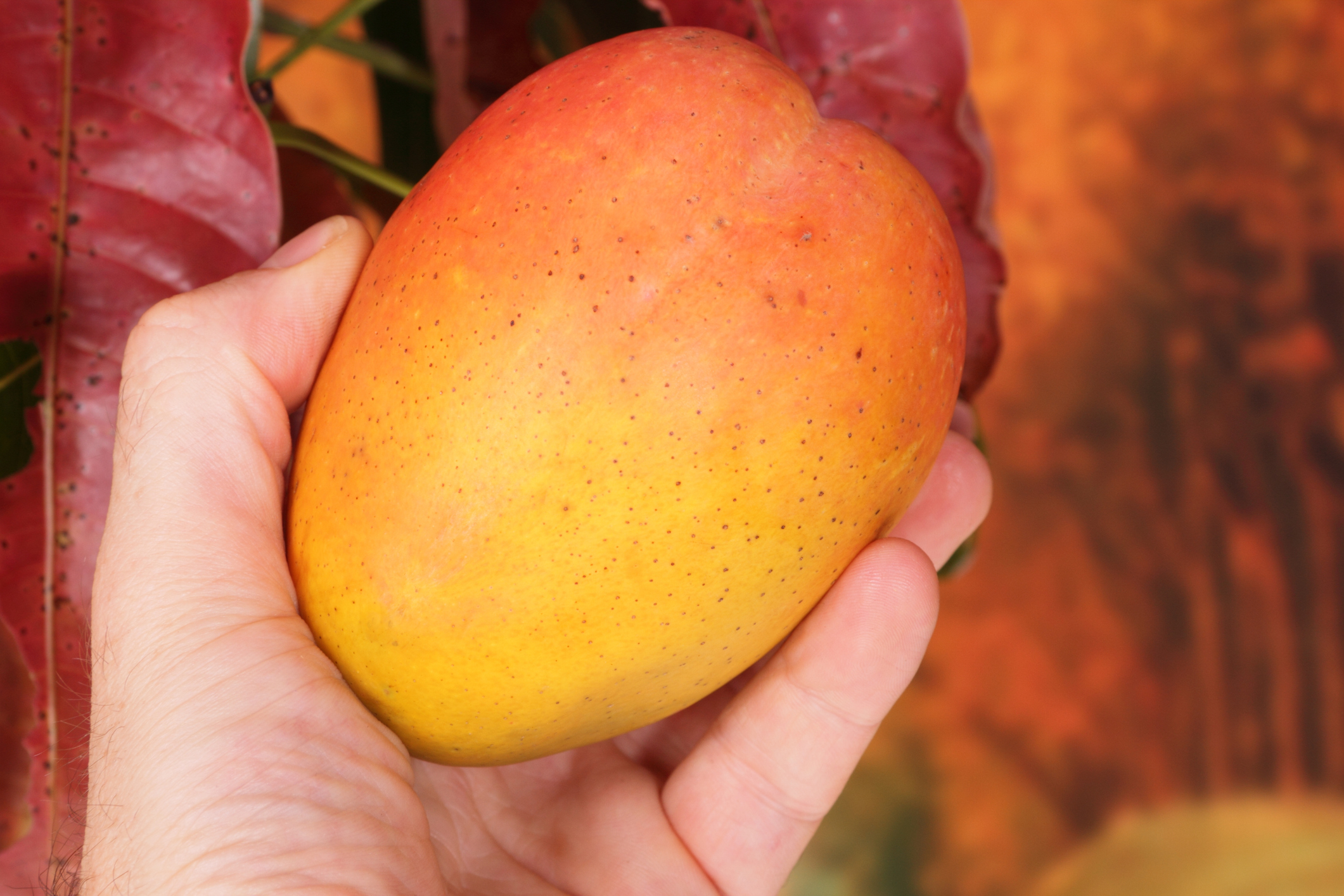The next time you eat a piece of fruit, take a moment to appreciate the journey it took to you. Not only was the fruit picked, it was packaged and transported — all with protocols in place to avoid picking up foodborne pathogens.
When the process fails, contamination results and illness can occur, as was the recent situation with mangoes and Salmonella.
To reduce the chance of contamination in that delicate fruit, a team in one University of Connecticut lab recently processed 4,000 mangoes and water samples to test the efficacy of three disinfectants commonly used by the industry to avoid contamination.
“When I saw the results, I didn’t believe it. So we re-ran the test ten times.” — Mary Anne Amalaradjou
To the utter surprise of researcher Mary Anne Amalaradjou, they found an unlikely candidate was extremely effective: chlorine. “When I saw the results, I didn’t believe it. So we re-ran the test ten times,” says the assistant professor in the Department of Animal Science.
Amalaradjou will present her findings at a meeting of the National Mango Board.
Salmonella is a frequent culprit for outbreaks in mangoes because it makes its way into the water used to wash the fruit in processing plants. According to the Centers for Disease Control and Prevention Salmonella leads to approximately 1.2 million cases of Salmonellosis each year in the United States and around 23,000 hospitalizations and 450 deaths.
“We had several outbreaks of people getting sick. The worrying part was the illnesses were not from cut mangoes, these were from mangoes they bought whole,” says Amalaradjou, whose work focuses on food safety and in finding new approaches to control or prevent foodborne illnesses.
In mango processing plants, the wash water is housed in gigantic tanks and once the water is contaminated, the bacteria are able to attach to the fruit’s skin and then enter the fruit’s pulp. Once bacteria make their way into the fruit, no amount of washing can remove them. With so many mangoes washed at once, the number of contaminated mangoes can be numerous, potentially causing many cases of Salmonellosis.
Recognizing the danger, the Center for Produce Safety and the National Mango Board funded Amalaradjou’s study. After taking on the project, Amalaradjou traveled to a mango processing plant to see the source of the contamination, the big wash water tanks, for herself in order to learn the processes so she could adapt them to a smaller-scale laboratory set up.
Amalaradjou was surprised by the results because chlorine is not very effective in the wash step for most produce. For one reason or another, from lettuce, to tomatoes to apples, chlorine simply doesn’t reliably kill Salmonella.
With mangoes, Amalaradjou found, chlorine cleaned the wash water and also helped prevent cross-contamination by cleaning the mangoes themselves.

One of the other challenges the research group had to tackle was not only effective Salmonella killing, but doing so with affordable and easily implementable measures on a large scale. Because chlorine is already used in the wash water, all that the processing plants need to do is to monitor the levels frequently to keep it at an effective concentration.
After this study and processing thousands of mangos, Amalaradjou says she still loves the fruit and has plans to study other bacteria that can potentially contaminate them.
“Listeria is another area of concern, we plan to study this next. One of the take-away lessons from this project was that not all produce will respond the same way to the same disinfectant.”



